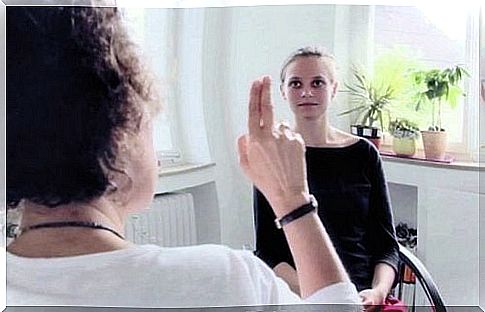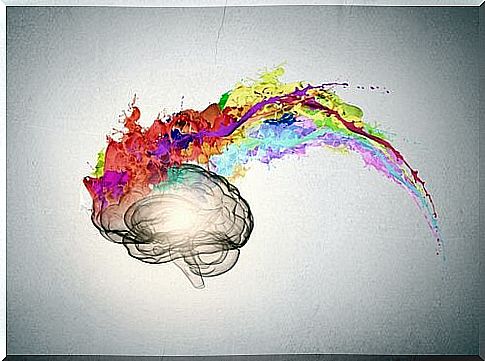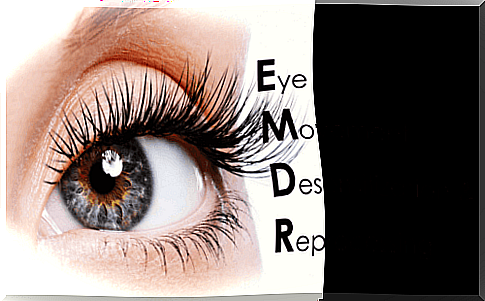EMDR Therapy To Treat Trauma

EMDR therapy (on eye movements) has a specific purpose: to reduce the impact of traumatic experiences. We are in the presence of an innovative psychological approach, which attenuates the impact of negative emotions through bilateral stimulation; that is, through the movement of the eyes, or through certain sounds or kinesthetic stimuli, such as tapping .
A treatment based on the movement of the eyes? Most likely more than one of our readers could view this therapeutic approach with a mixture of curiosity, surprise and a hint of skepticism. However, on closer inspection, EMDR therapy arouses some interest. It must be said that this is a relatively new therapy, which although it did not have the expected impact from the beginning, is being chosen by an increasing number of psychologists.
This method was developed in the 1980s by Francine Shapiro, a neurologist and cognitive-behavioral psychotherapist. The aim of this doctor from the Mental Research Institute in Palo Alto, California, was to provide a specific technique for the treatment of post traumatic stress. According to her, there was no concrete strategy that could help patients limit the impact of the trauma or the effect it causes on the brain, behavior and how one relates to others.
Hence, Shapiro spent periods of research analyzing the most advanced procedures to define a clinical strategy that is as innovative as it is controversial according to many psychiatrists. However, as she herself points out: only one session is enough to notice its effectiveness.

Goals of EMDR therapy
The purpose of EMDR therapy, or desensitization and reworking through eye movements, encompasses multiple aspects. On the one hand, it tries to identify the specific problem that afflicts the patient. Starting from this, the therapist who specializes in these techniques will help him to process traumatic experiences in order to reduce or eliminate the emotions associated with those events.
Negative thoughts and feelings will be replaced with more general ones. The goal is to help each of us to manage our inner world much better, in order to be able to act with healthier behaviors.
Now, it must be said that EMDR therapy is not aimed solely at the resolution of traumatic events (aggression, bereavement, consequences of war, etc.). In recent years it is proving to be really effective in several areas :
- Anxiety Disorders.
- Phobias.
- Crisis of distress.
- Eating disorders.
- Addictions.
EMDR techniques therefore have a very clear purpose. Focus on each patient to find that suitable intervention mechanism, by which to mediate in the healing process. Not all cases are the same and not all react in the same way to the same techniques.
Then, once the most suitable strategy has been identified on a case-by-case basis, we proceed by establishing a sensory stimulation system that will allow the brain to process adverse emotions and thoughts. Let’s see in more detail how this technique is applied.
What does EMDR therapy consist of?
EMDR therapy ranges from three sessions to one treatment that can last up to twelve months. It depends on the severity of the trauma, phobia or psychological disorder suffered by the patient. Furthermore, a pillar on which this type of approach is based is the correct training of the therapist. And this is because we are not simply talking about a person moving their fingers for the patient to follow the movement of the eyes.
EMDR is based on multiple strategies, on multiple dynamics that require skill, intelligence and the intuition of a good professional who knows how to direct the patient to bring him back to an authentic adaptive resolution.
We are talking about that therapeutic purpose which involves alleviating negative symptoms, stimulating a change in beliefs and inducing the person to better deal with their daily life.

Stages of treatment:
- Medical history and therapy planning.
- Preparation. An attempt is made to establish a relationship of trust with the patient and to explain to him what the therapy will consist of.
- Assessment. Negative emotions and feelings are identified.
- Desensitization ⇔ technique of eye movement.
- Installation. Moment in which negative thoughts and emotions must be replaced with others that are more inclusive and positive.
- Body scanner. The patient’s actual ability to remember trauma-related events is assessed without experiencing negative feelings.
- Conclusion of the session and new evaluation.

Techniques used during the treatment
EMDR actually draws on different models, approaches and techniques to elaborate its treatment. Aspects of cognitive, humanistic, behavioral psychology and the bioinformative process coexist in its psychotherapeutic fabric. Now, the most distinctive aspect is certainly the bilateral stimulation, which focuses on various approaches.
- Visual : the psychologist moves a finger in front of the patient asking him to follow him with his eyes. Rapid eye movements dissolve memory “knots” in which adverse emotions are concentrated.
There are those who argue that this strategy imitates the REM phase (since this phase of sleep also allows us to “filter” experiences and memories of the days). At the same time, others believe that the alternation of the attention of the gaze passing from right to left guarantees a greater balance between the cerebral hemispheres.
- Auditory: the therapist applies certain sounds to be heard by the patient to generate calm and a concrete emotional state in him.
- Kinesthetic ( tapping ): in this case, the psychologist lightly taps the patient’s hands and shoulders. In this way, it also tries to reduce the tension and impact of negative emotions.
Conclusions on EMDR
There are those who describe this technique as a pseudoscience and also those who emphasize the lack of an extra pinch of clarity on the applied methodology.
However, we are certain of one thing, and it is the large following it has in the United States, in addition to the fact that according to Dr. Shapiro herself, it would have helped over two million people.
The EMDR technique is today an alternative with long-term results, in many cases, and which, therefore, deserves to be taken into consideration. In any case, it is always good to be able to count on more resources to be able to face the impact of adverse events on humans.









